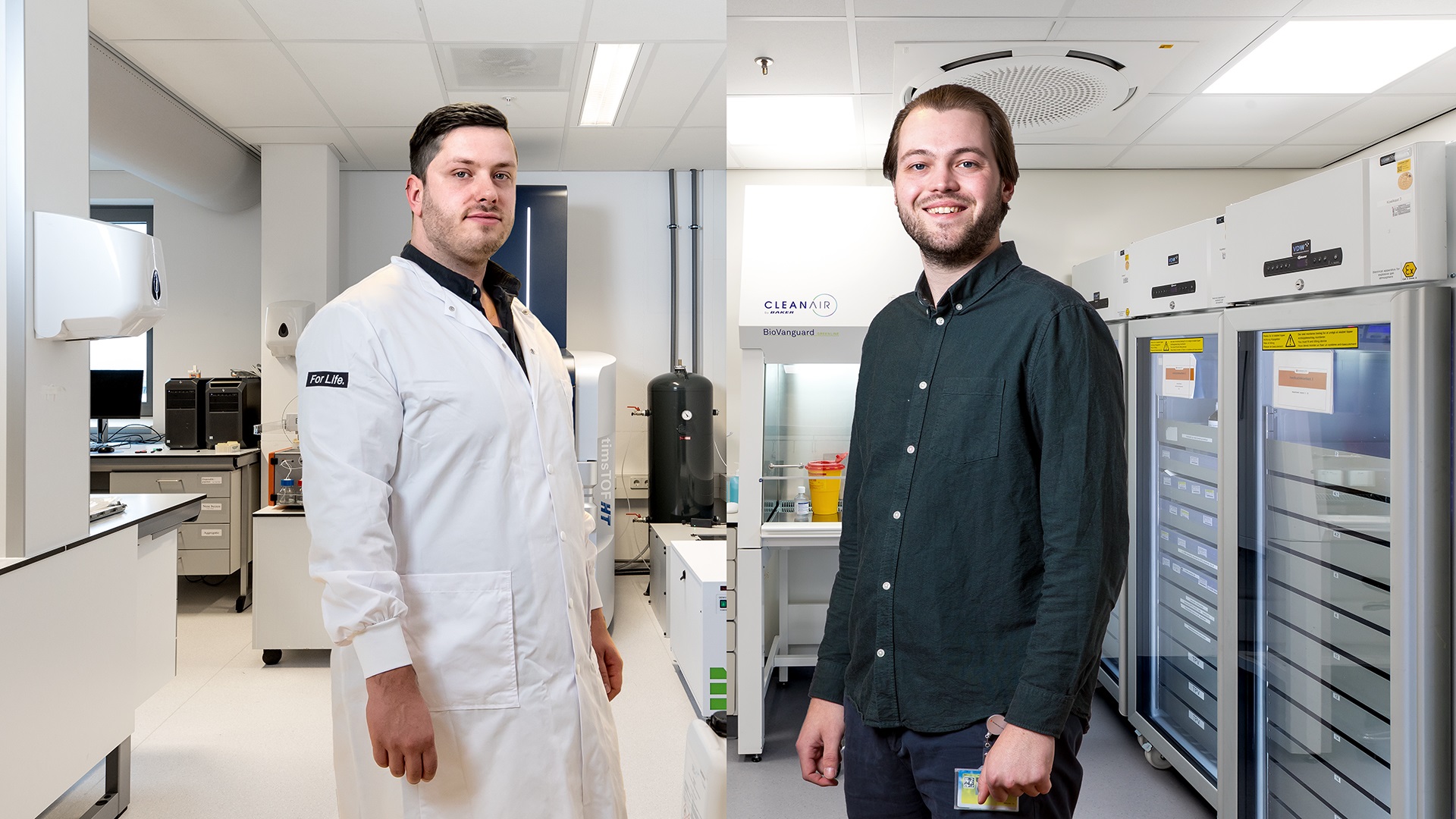Unravelling rare blood cancer using protein profile in blood
News People with the rare Waldenström disease form a heterogeneous group of patients. It is not clear why patients with this malignant blood disease differ so much from each other, making it difficult to predict the course of their disease. Researchers from Sanquin and the Amsterdam UMC are trying to gain insight into the diverse protein profiles of patients using blood samples. They want to better understand the disease and find starting points for follow-up research.
People with the rare Waldenström disease form a heterogeneous group of patients. It is not clear why patients with this malignant blood disease differ so much from each other, making it difficult to predict the course of their disease. Researchers from Sanquin and the Amsterdam UMC are trying to gain insight into the diverse protein profiles of patients using blood samples. They want to better understand the disease and find starting points for follow-up research.
As pioneers, they started a very special path a year ago, say Pieter Langerhorst (left) and Wouter Verhaar (right). Langerhorst is a postdoctoral researcher at Molecular Hematology at Sanquin and Verhaar is a clinical scientist at the Hematology department of Amsterdam UMC. The research they are now conducting together is unique. Never before have scientists in the world focused on the protein profiles in plasma of patients with Waldenström disease. “As a result, we have no frame of reference,” says Langerhorst. “We cannot do a literature study and we will not be able to compare our results with any other research. Everything we find is new. That makes it difficult, interesting and exciting.”
Tumor and IgM M-protein
Verhaar explains that Waldenström’s disease is a rare form of blood cancer. Every year, around 250 new patients are diagnosed in the Netherlands, of whom approximately two-thirds are male and one-third are female. According to the clinical scientist, the disease is characterized by two aspects. “Due to a genetic defect, the patients have a certain type of tumor cells in the bone marrow, namely lymphoplasmomycytic lymphoma. This consists of a mixture of different types of B cells, antibody-producing immune cells, the composition of which can vary greatly per patient. These proliferating cells also produce an excess of IgM M-protein, a certain type of antibody. What is special is that both these tumor cells and that protein can cause symptoms. The tumor cells can lead to, for example, anemia and the protein to nerve damage and, after clotting, to reduced vision and skin bleeding.”
Subsidy Hematon
Although there are various treatment options, such as chemo-immunotherapy or BTK inhibitors, a form of targeted therapy, Waldenström”s disease is incurable. Patients are only treated if they have symptoms. In the case of protein clotting, patients receive plasmapheresis, in which their own plasma with the excess M-protein is replaced by donor plasma. However, because the patient group is heterogeneous and the disease presents itself so differently, it is difficult to determine which therapy to give per patient and when to start it. For example, there are patients with a great many tumor cells and high concentrations of M-protein who do not suffer from anything and others whose values are very low who do develop symptoms. That is why it is necessary to understand the disease better, Langerhorst and Verhaar believe. They received a subsidy for their research from Hematon, the patient organization for people with blood cancer or lymph node cancer.
Exploring the blood
The great thing is that the researchers can use the biobank of Amsterdam UMC with blood samples from almost 200 patients with Waldenström”s disease. Langerhorst: `Nobody has ever systematically looked at the blood of such patients. We have now started an exploratory journey through that blood with the aim of finding as yet unknown deviations in the protein pattern.”
The postdoctoral researcher says that he uses proteomics for this, a technique with which he will measure the 600 most common proteins with mass spectrometry. `We can then look at the immune system, clotting factors, small signal proteins and acute phase proteins that the liver produces under physical stress. This gives us an idea of how the molecular processes in the blood will be different as a result of the tumor. We will find these differences by comparing protein profiles of patients with those of healthy people and with those of people with a pre-stage of the disease that is on the verge of malignant. Our approach is a hypothesis-generating technique. At the end of our study, there will be more questions than at the beginning.”
Addressing inflammation
One of the focal points that will be taken into account during the study is inflammation. Verhaar says that hematologist Josephine Vos, the head of his department, often sees patients with complaints of fatigue but who do not have anemia as a result of Waldenström”s disease. “We then have no direct explanation for that fatigue. One of our hypotheses is that it is caused by an overactive immune system, which leads to inflammatory reactions in the body. We hope to see that later on based on those protein profiles.”
Verhaar expects that all that knowledge will contribute to the development of better diagnostics and, in the future, also to more targeted treatment. “But we are not there yet. Other research groups will also have to study the role of the specific proteins that we discover further. It was nice that we recently received a lot of positive feedback from experts in the field during the international Waldenström congress in Prague in October. Their focus is on what happens in the tumor cell and ours on what the consequences are in the body. It will be interesting to compare all these data later.”
